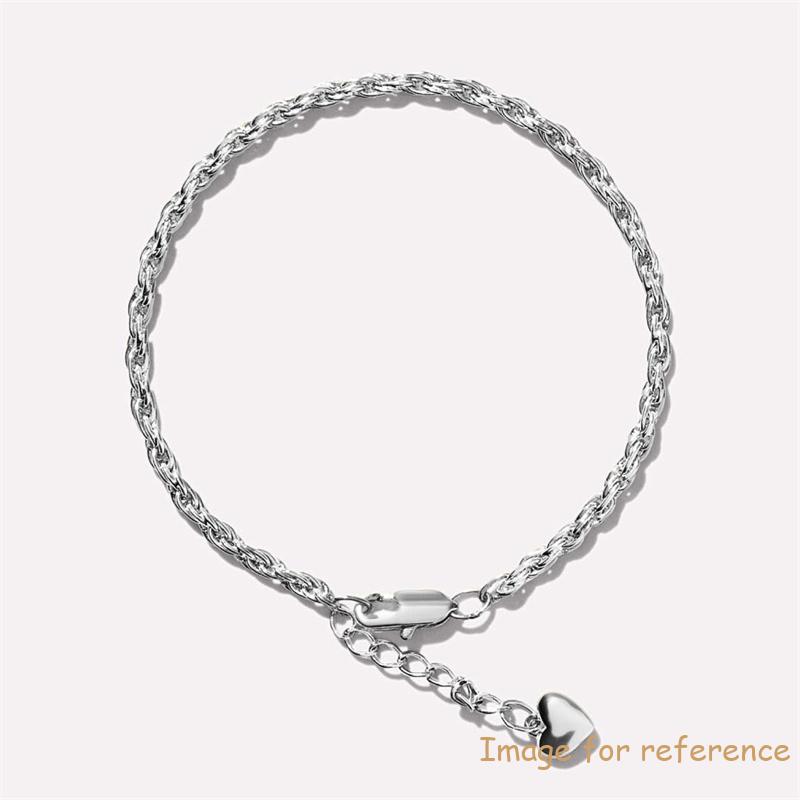Estimering af produktionsomkostninger 5,000 Rhodium-belagt sterlingsølv armbånd
Indledning
Smykkeindustrien involverer ofte bulkfremstilling af varer for at imødekomme markedets krav. Et sådant eksempel er produktion af 5,000 rhodinerede armbånd i sterlingsølv. At forstå omkostningskonsekvenserne af en så stor produktion er afgørende for både virksomheder og forbrugere. Denne artikel dykker ned i de forskellige faktorer, der påvirker omkostningerne ved at fremstille disse armbånd, giver en detaljeret opdeling for at give en omfattende forståelse.

1. Materielle omkostninger
1.1 Sterling sølv
Sterling sølv, omfattende 92.5% Rent sølv, er det primære materiale, der bruges i produktionen af disse armbånd. Prisen på sterling sølv svinger baseret på markedspriser, som er påvirket af faktorer såsom mineomkostninger, Markedets efterspørgsel, og geopolitiske begivenheder. Fra de seneste data, prisen på sterling sølv er ca $0.80 gram.
1.2 Rhodium plettering
Rhodium er et ædelmetal kendt for dets reflekterende egenskaber og modstandsdygtighed over for anløbning. Det bruges ofte til at belægge sterlingsølvsmykker for at forbedre dets udseende og holdbarhed. Omkostningerne ved rhodiumplettering inkluderer både materialeomkostninger og arbejdskraft involveret i pletteringsprocessen. Rhodium plating koster typisk mellem $3 til $5 pr. stykke, afhængig af tykkelsen af pletteringen og kompleksiteten af designet.reddit.comreddit.comreddit.com+1reddit.com+1
1.3 Andre materialer
Yderligere materialer kan omfatte ædelstene, spænder, og andre dekorative elementer. Prisen på disse materialer varierer baseret på kvalitet og designspecifikationer. For nemheds skyld, lad os anslå en gennemsnitlig omkostning på $2 per armbånd for disse ekstra materialer.
2. Arbejdsomkostninger
Arbejdsomkostninger omfatter de lønninger, der betales til arbejdere, der er involveret i forskellige produktionsstadier, inklusive design, casting, polering, og plettering. Kompleksiteten af armbåndsdesignet og det krævede håndværksmæssige niveau kan påvirke lønomkostningerne markant. I gennemsnit, lønomkostninger kan variere fra $5 til $10 pr. armbånd.
3. Overhead omkostninger
Overheadomkostninger omfatter omkostninger forbundet med driften af produktionsanlægget, såsom forsyningsselskaber, vedligeholdelse af udstyr, og administrationsudgifter. Disse omkostninger er typisk fordelt på alle producerede enheder. Til storstilet produktion, overhead omkostninger kan estimeres til $1 til $2 pr. armbånd.
4. Emballage og forsendelse
Emballage sikrer, at armbåndene er beskyttet under transport og præsenteret attraktivt for kunderne. Omkostningerne til emballagematerialer og arbejdskraft kan variere fra $0.50 til $1 pr. armbånd. Forsendelsesomkostninger afhænger af destination og mængde, men kan estimeres til $1 til $2 per armbånd til bulkforsendelser.
5. Samlede fremstillingsomkostninger
Ved at aggregere omkostningerne skitseret ovenfor, vi kan estimere de samlede produktionsomkostninger pr. armbånd:
-
Sterling sølv: $0.80 per gram × 10 gram = $8.00
-
Rhodium plettering: $4.00
-
Andre materialer: $2.00
-
Arbejdskraft: $7.00
-
Overhead: $1.50
-
Emballage og forsendelse: $1.50
Samlet pris pr. armbånd: $24.00
For 5,000 armbånd, de samlede produktionsomkostninger ville være:
$24.00 × 5,000 = $120,000
6. Yderligere overvejelser
6.1 Designkompleksitet
Indviklede designs kan kræve mere tid og specialiseret arbejdskraft, øger både arbejdskraft og faste omkostninger. Brugerdefinerede designs kan også føre til højere indledende opsætningsomkostninger på grund af behovet for specialiserede forme eller værktøj.
6.2 Kvalitetskontrol
Implementering af strenge kvalitetskontrolforanstaltninger sikrer, at hvert armbånd lever op til de ønskede standarder. Selvom dette kan øge lønomkostningerne, det hjælper med at reducere afkast og øge kundetilfredsheden.
6.3 Masserabatter
Bestilling af materialer i løs vægt kan føre til betydelige omkostningsbesparelser. Leverandører tilbyder ofte rabatter ved store ordrer, som kan reducere omkostningerne pr. enhed af materialer.
6.4 Markedsforhold
Udsving i priserne på sølv og rhodium kan påvirke produktionsomkostningerne. Det er vigtigt at overvåge markedstendenser og justere prisstrategier i overensstemmelse hermed.
7. Konklusion
Fremstilling 5,000 rhodineret sterling sølv armbånd involverer forskellige omkostninger komponenter, herunder materialer, arbejdskraft, over hovedet, og emballage. Ved at forstå disse faktorer og overveje yderligere overvejelser såsom designkompleksitet og markedsforhold, producenter kan effektivt estimere omkostninger og træffe informerede beslutninger. Det er afgørende at opretholde en balance mellem omkostningseffektivitet og produktkvalitet for at sikre succes med fremstillingsprocessen.
